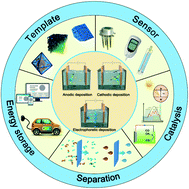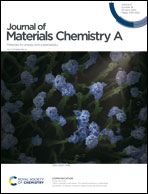Electrochemical deposition of metal–organic framework films and their applications
Abstract
Metal–organic framework (MOF) thin films have received increasing attention for many applications, such as chemical sensors and membranes. Several techniques have been developed for the deposition of MOF films. In particular, the processing of electrochemical deposition of MOFs has only recently been initiated but stands out from other methods due to the mild preparation conditions, monitoring of continuous processes, precisely controllable synthesis parameters and potential for large-scale production. Recently, interest in the electrochemical deposition of MOF films has started to expand from their preparation to applications. In this review, we summarize and critically assess the state of the mechanism, the influence of parameters on electrochemical deposition of MOFs and their corresponding applications in different areas. Moreover, the strengths and shortcomings of different electrochemical deposition methods and their suitable scopes are discussed. Finally, the urgent challenges and future opportunities of electrochemical deposition of MOFs are highlighted.

- This article is part of the themed collection: 2020 Journal of Materials Chemistry A most popular articles


 Please wait while we load your content...
Please wait while we load your content...